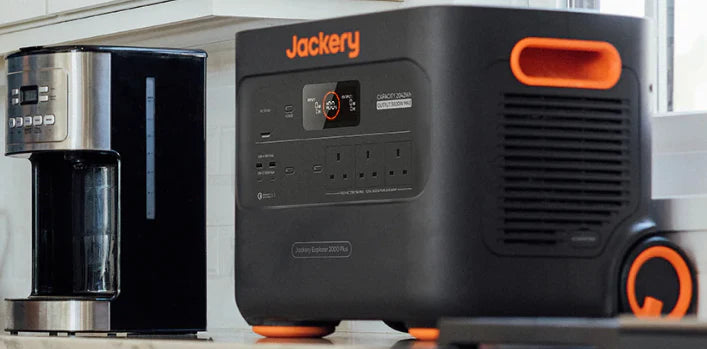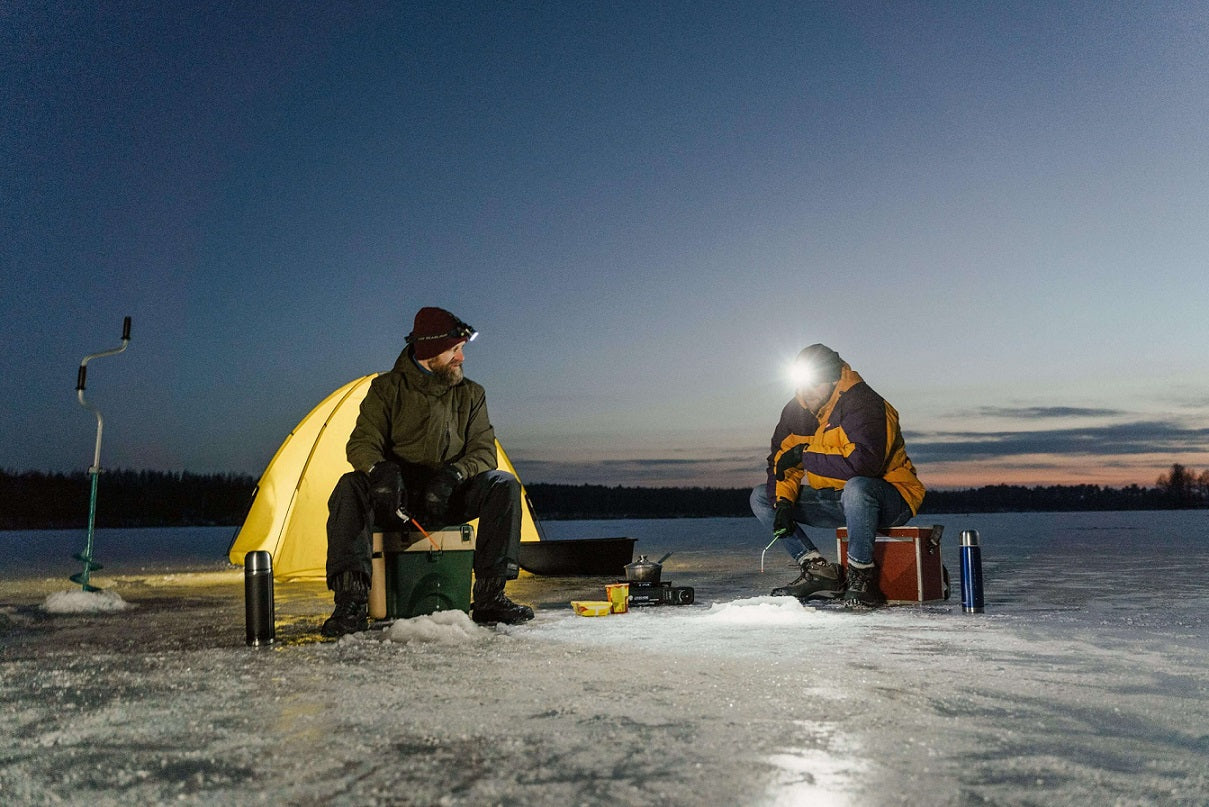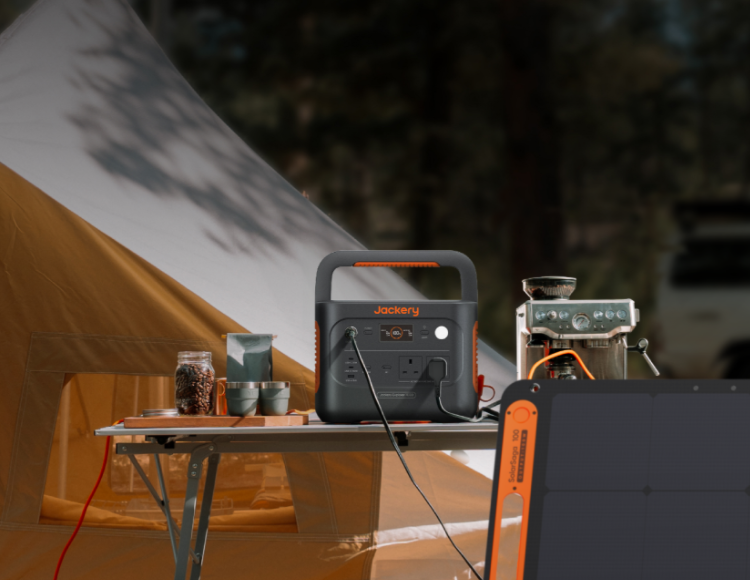Appropriately charging a solar battery is fundamental because it safeguards the battery's efficiency, permanency, and complete operational health. While technically speaking, the charging process must respect the battery's established depth of discharge (DoD) and avoid undercharging or overcharging that can lead to sulphation or grid corrosion. Apart from that, intelligent charging strategies, such as Maximum Power Point Tracking (MPPT), optimize the power extraction from photovoltaic cells.
With optimal charging, we can also ensure that the inherent intermittency of solar power is counterbalanced effectively, which helps maximize return on investment by minimizing battery degradation and subsequent replacement costs. In a similar vein, let's discuss the basics of solar battery charging in addition to explaining the dos and don'ts of charging a solar battery. In the end, we will also recommend reliable portable power station UK solutions.

The Basics of Charging a Solar Battery
Solar batteries, typically lithium-ion-based nowadays, store energy generated from solar panels through electrochemical energy storage. When sunlight strikes PV cells on a solar panel, electrons are knocked loose and create an electric current. This DC electricity then flows to an inverter that converts it to AC for home use. Any surplus energy is directed toward charging a solar battery.
Battery management systems (BMS) monitor and control this process, ensuring optimal charge and discharge rates, balancing energy across the battery's cells, and preventing overcharging and overheating. At the same time, state-of-charge measurements monitor energy levels while utilizing voltage, current, and temperature data to estimate remaining capacity and optimize the prolonged existence and performance of the battery. Advances in technology, including the use of lithium-iron and solid-state batteries, continue improving cycle life, safety, and energy density, which helps enable more effective capture and storage of solar energy.
Importance of Efficient Charging to Maximize Solar Energy Storage
- Maximized Energy Independence:Solar energy storage plays a pivotal role in achieving energy independence by providing a reliable and consistent power supply even when solar generation is limited. Efficient charging ensures that the battery is effectively charged during peak sunlight hours, allowing for greater energy storage. This stored energy can then be tapped into during periods of low solar generation, such as nighttime or overcast days, reducing the need to rely on the grid or non-renewable energy sources. With an optimized energy storage system, users gain more control over their energy consumption and reduce their environmental impact.
- Optimal Energy Utilization:Efficient charging directly impacts the energy utilization efficiency of a solar energy system. By carefully managing the charging process with MPPT technology and minimizing losses, more solar energy is harnessed and effectively stored in the battery. This means that a larger portion of the energy generated by solar panels is put to practical use rather than being wasted. As a result, the system becomes more economically viable and ecologically friendly, maximizing the return on investment in solar technology.
- Extended Battery Lifespan: Proper charging practices help maintain the health and longevity of batteries. Overcharging or undercharging can lead to premature battery degradation and reduced performance. Periodic equalization charges rebalance individual cell voltages and specific gravities within the battery bank, extending the battery's lifespan and ensuring uniform charging for maximum storage capacity. With efficient charging, batteries operate within safe parameters, preserving their lifespan and reducing the need for frequent replacements.
- Better System Performance: The overall performance of a solar energy system is significantly enhanced by efficient charging practices. When the battery is adequately charged, and energy is stored optimally, the system can operate at its peak efficiency. This process translates into smoother and more reliable power delivery to connected appliances and devices. Users can enjoy an uninterrupted electricity supply, improved system stability, and a more seamless integration of solar energy into their daily lives.
Dos for Charging a Solar Battery
In this section, let's discuss the six Dos for charging a solar battery.
1. Proper Installation and Positioning of Solar Panels
For optimal solar power generation, you must correctly install and position the solar panels. In the UK, the most effective orientation is usually south-facing. However, southeast or southwest can also work effectively. Additionally, regular tracking of the sun's path across the sky through a solar tracker can also enhance energy production, which allows the panels to continuously face the sun and thus collect more sunlight.
2. Use of a Compatible and High-Quality Solar Charge Controller
A solar charge controller regulates the current and voltage from the solar panels and ensures the battery does not overcharge. It also prevents battery discharge in low or no light conditions. When selecting a controller, consider the type of battery being charged, as this affects charging parameters. Besides, matching the controller's input voltage with the solar panel system voltage is also important.
3. Regular Monitoring of the Battery's Charge Levels
Regularly monitoring the battery's charge levels is key to prolonging its lifespan and optimizing its performance. Monitoring devices incorporated into the solar charge controller or as part of a separate BMS can give real-time insights into the state of charge and the battery's health.
4. Adherence to Manufacturer's Guidelines for Charging Rates and Voltage Settings
Different batteries require different charging rates and voltage settings, typically specified by the manufacturer. For example, when charging a solar battery with a Lithium-ion solution, it is crucial to adhere to the manufacturer's guidelines for charging rates and voltage settings. Familiarize yourself with the manufacturer's documentation and set the charging parameters accordingly. Connect the battery to the charging device and initiate the charging process while closely monitoring the charging progress. It is essential to observe safety precautions, such as proper ventilation and following any additional instructions provided. By following these steps, you ensure the safe and optimization of charging a solar battery, promoting its longevity, performance, and safety.
5. Clean and Maintain Solar Panels for Optimal Performance
Regularly cleaning and maintaining Solar Panels are important to ensure the solar panels are functioning at their maximum capacity. In the UK, rain often does a good job of cleaning the panels. Nevertheless, dust and bird droppings can accumulate and reduce output efficiency during dry weather or if the panels are mounted at a shallow angle. For that reason, you should use a soft brush or a specialized cleaning tool to remove the debris, and consider doing this early in the morning or late in the evening to avoid potential thermal shock from cold water on hot panels.
6. Consideration of Backup Charging Source during Extended Periods of Low Sunlight
Given the UK's variable weather conditions, extended periods of low sunlight may exist, especially during winter. In such scenarios, it may be useful to have a backup charging source to maintain the charge of your solar battery. Such backup sources should be integrated carefully to ensure compatibility with the existing solar system and safety considerations.
Don'ts for Charging a Solar Battery
In the following paragraphs, let's talk about the five Don'ts for charging a solar battery.
1. Overcharging the Battery
Overcharging a solar battery can harm its lifespan and efficiency. The elevated heat generated during overcharging causes energy losses and potential safety risks, including the release of flammable gases, swelling, or even thermal runaway. The excessive charge places undue stress on the battery's internal components, leading to accelerated material degradation and a reduced lifespan. Besides, overcharging a solar battery, or pushing the voltage beyond the nominal voltage, can cause excessive gassing, prompting thermal runaway and potential battery failure. [1]
2. Frequent Full Discharging
Allowing your solar battery to discharge fully regularly can lead to a phenomenon called deep cycling, which can severely impact the battery's life cycle. As stated earlier, most solar batteries, particularly lithium-ion types popular in the UK, have a specific DoD value, representing the percentage of a battery's energy discharged relative to the overall capacity. Routinely discharging below the recommended DoD level can stress the battery and degrade its capacity over time.
3. Neglecting Regular Maintenance and Cleaning
Regular maintenance and cleaning of solar batteries are not tasks to overlook. Accumulated dust, dirt, and moisture can impair the functioning of the battery system and increase the resistance to electron flow. Routine maintenance is essential, particularly in the UK, where seasonal weather changes can be drastic.
4. Using Incompatible or Low-Quality Charging Equipment
Using incompatible or low-quality charging equipment can compromise the battery's efficiency and durability. The solar charge controller, for instance, is crucial in regulating the current and voltage going to the battery to prevent overcharging. Regarding MPPT controllers, commonly used in the UK's residential solar installations, compatibility with the battery's voltage and current characteristics is vital. A low-quality or incompatible controller might not track the maximum power point correctly, which results in suboptimal charging and potential battery damage.
5. Ignoring Warning Signs or Unusual Battery Behaviour
Ignoring warning signs or unusual behaviour of your solar battery can lead to substantial damage and potential system failure. Signs like swelling of the battery, reduced capacity, or irregular voltage levels should not be overlooked. Advanced solar systems often have a BMS that monitors these parameters. In the UK, where weather conditions may vary considerably, sudden changes in battery behaviour could indicate issues with the thermal management of the battery. However, the BMS can quickly identify these issues, enabling timely interventions to mitigate potential damage.
Our Reliable Solar Energy Solutions
Looking for a reliable solar energy solution? The Jackery Solar Generator 2000 Pro is an excellent choice. Boasting a gigantic capacity of 2,160 Wh, our device can efficiently power your appliances, from hot plates to air conditioners. Its lithium battery ensures safe, dependable charging, while its foldable handle design renders it perfect for on-the-go use. Charging a solar battery has never been faster – it fully charges in just 2.5 hours with 6 SolarSaga 200W solar panels or in 2 hours via an AC wall outlet. It also has a generous 5-year warranty when purchased directly from our official website. Moreover, our Solar Generator 2000 Pro is a solar power battery solution you can trust, whether used as a solar panel car charger or waterproof power bank.

Besides, the Jackery Solar Generator 1500 Pro is another powerful, reliable, and highly flexible solar energy solution. It offers ultra-solar charging for a swift 2-hour solar charge and redefines the experience of charging a solar battery. Its intelligent BMS and 8 state-of-the-art temperature sensors ensure optimal charging safety. With a 1512Wh capacity and the ability to power up to 7 devices simultaneously, the power station of Jackery Solar Generator 1500 Pro is ideal for indoor and outdoor use. Lightweight at 37.4 lbs and equipped with a foldable handle, Jackery Explorer 1500 Pro Portable Power Station is conveniently portable. Lastly, we guarantee strength and durability by meeting the highest UL requirements and offering a superb 5-year warranty.

Choose Jackery as Your Reliable Solar Generator Partner
Jackery was born with a vision to offer green energy to everyone, everywhere. In 2016, Jackery launched its first outdoor portable power stations and, two years later, developed its first portable solar panels. Jackery has brought solar generators to the great outdoors, meeting the power needs of nature lovers and encouraging them to seek even more extraordinary experiences. We encourage global adventurers to enjoy the outdoors sustainably, working together to protect our planet and build a better future.
In conclusion, following best practices for charging a solar battery is vital for maximizing its longevity and efficiency. Adhering to manufacturer guidelines, monitoring charge levels, using advanced technologies like MPPT controllers, and considering factors such as peak sun hours utilization and DoD management optimize the charging process.
Our company offers reliable solar energy solutions like the Jackery Solar Generator 2000 Pro and Jackery Solar Generator 1500 Pro, providing fast charging, intelligent battery management, and portable design. By prioritizing and investing in proper charging practices and leveraging our cutting-edge solar energy solutions, you can unlock the full potential of solar power utilization, achieving not only maximum energy harvesting but also guaranteeing exceptional battery performance.
Reference
- Overcharge. Available at: https://www.sciencedirect.com/topics/engineering/overcharge.(Accessed on 25th July 2023)


































































































